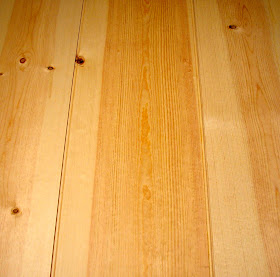Saturday, September 29, 2012
Last of the Pegboard Removed and New Layout Tool Panel Installed
It's been a long time getting here, but the shop is now "pegboard free" - wahoo! I've talked about this before, how I think pegboard has its place, but how I much prefer real wood.
When I was first setting up the shop it looked like this:
As you can see, with the exception of the brace rack, all the tools panels were pegboard.
Well, one panel at a time, I've slowly replaced the pegboard. The first up-grade was to the saw panel, then the drilling/boring panel *. Now it was time to tackle the largest and most random of the panels - the one in the center that was a mishmash of tools - some chisels, files and rasps, punches, mallet, knives, snips, squares etc.
I was just going to pull the pegboard from the frame and replace it with tongue and groove 1x12s. I started that process by slicing open the bottom of the frame with a slitting gauge. Then my apprentice, Teague, helped me slide the pegboard out of the frame.
Then, as frequently happens, I changed plans. I decided that what I really needed to make was three panels: one for layout tools, one for frequently used miscellaneous tools, and one for chisels. Anything from the original panel that didn't fit one of these categories would just have to find another home.
The first of the new panels would be for the layout tools. It was made the same way I've made the other panels, so I won't go into great detail on the process, but here is a brief photo summary.
First, the Stanley #48 was used to create the tongue and groove joints:
The three boards of the panel joined together and with the joint showing the approximate amount of shrinkage I get on my other panels in winter:
There's nothing wrong with just leaving the panel like this, but I prefer to make the gap less noticeable and a little fancier by beading the edge on one of the boards at each joint.
Using a moulding sample to decide which bead size I wanted to use to make the joint look better as it expands and contracts over the course of the seasons:
Beading with the 1/4" side bead plane that matches the sample:
And the final result, again set to the approximate maximum shrinkage and gap:
A close up shot of the same:
And the panel completed, hung on the French cleat system in the shop, and loaded with layout tools:
Again, there was nothing wrong with the pegboard version, but this one makes me happy when I look at it - which is something we seem to be lacking all too often in today's world.
*Okay, I guess I should read my own blog more often - then I would have remembered that I used the wooden T&G planes and that they worked better...sheesh. Oh, and to answer the question I asked at the end of the boring/drilling post - "No. More like soon as in almost two years!"
Monday, September 3, 2012
Black Spruce Carving Mallet
One of the projects my students will be working on this year is making a carving mallet. We didn't need these last year when we made wooden spoons, but there will be some projects this year where a mallet to use with the gouges will come in handy.
This weekend I made a prototype from some black spruce harvested from the burn zone of the Miller's Reach fire. That was a huge fire back in 1996 that burned over 37,000 acres and around 400 buildings. The area, like a lot of this part of Alaska, is boggy, and the black spruce are dominant. I don't know if black spruce grows differently elsewhere, but up here they are very "Doctor Seuss" like:

They are extremely slow growing - this is a mature stand that escaped the fire. In the burnt areas they look like bare, black poles.
Here's the section I started with:

It was an off-cut from another project at our school and had been stripped with a power planer. "Oh the humanity!"
Here's what I meant by slow growing:

This one has 60 rings per inch! So at three inches in diameter, it's a 90 year old tree - yikes!
After cutting to length, I worked at the shavehorse to rough out the shape of the handle with a drawknife. Then I switched to the spokeshaves to smooth and refine. I should mention how handy the step cut in the end of the shavehorse was on this project. For creating the curve down from the head, I used the horse normally. For the flair at the bottom of the handle, I couldn't keep shaving in the same direction as it would be working against the grain. I could have reversed the spokeshave and pushed, but instead I removed the mallet from under the horse's head, put the top of the mallet head on my solar plexus and wedged the end of the handle on the step and shave down the curve with the grain - easy and quick!
Here it is with the handle mostly finished:

And here it is after the head was also cleaned up:

And oiled:


I'm not sure if the checking will be a problem or not. Even with the cracks, it feels solid. Time will tell...
And the final mallet with the tools used to make it:

The kit: drawknife, flat and round spokeshaves, and a curved scraper. Missing are the shavehorse, and the saw.









